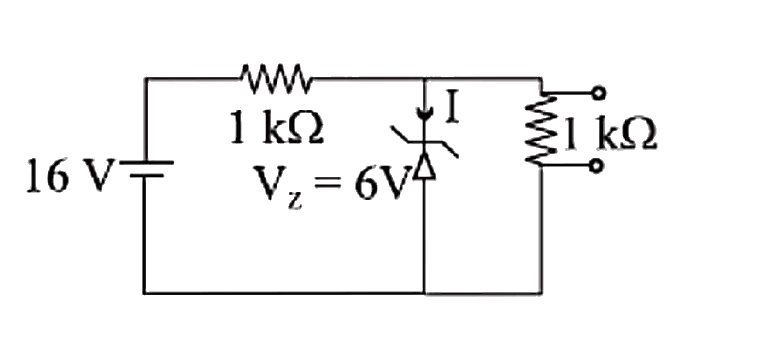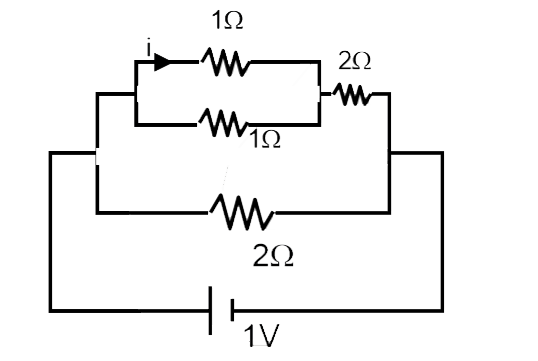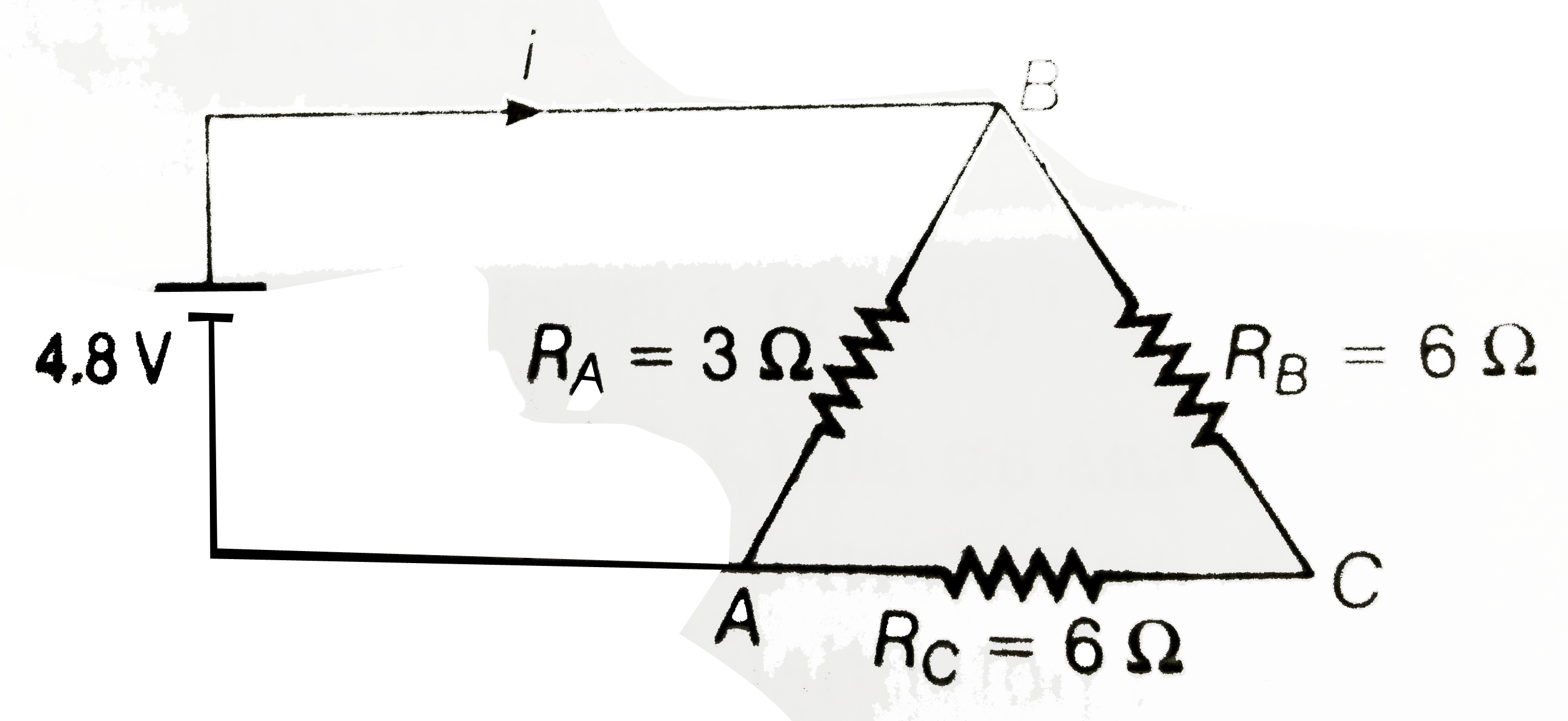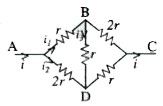Write two reasons, why a galvanometer cannot be used as such to measure current in a given circuit.
If both assertion and reason are true and reason is the correct explanation of assertion.
If both assertion and reason are true but reason is the correct explanation of assertion.
If assertion is true but reason is false
If both assertion and reason are false.
The correct Answer is:A
To answer the question of why a galvanometer cannot be used directly to measure current in a circuit, we can break it down into two main reasons:
1. Sensitivity to Current:
- A galvanometer is designed to detect very small currents, typically in the microampere range. It has a figure of merit (current sensitivity) that indicates the amount of current required to produce a unit deflection in the galvanometer's needle. For example, a galvanometer may require only a few microamperes to show a deflection, but to achieve full-scale deflection, it may require several milli-amperes.
- Conclusion: Because of its high sensitivity, a galvanometer is not suitable for measuring larger currents, as even a small increase in current can lead to a significant deflection, making it difficult to obtain accurate readings.
2. High Internal Resistance:
- A galvanometer has a relatively high internal resistance compared to an ammeter. When connected in a circuit, this high resistance can significantly reduce the current flowing through the circuit.
- Conclusion: The presence of high resistance means that the galvanometer will not allow the full current to pass through, leading to an inaccurate measurement. This is because the current measured will be lower than the actual current in the circuit due to the voltage drop across the galvanometer.
Summary:
- Reason 1: A galvanometer is too sensitive and can only measure small currents accurately, leading to difficulties when measuring larger currents.
- Reason 2: The high internal resistance of a galvanometer affects the current in the circuit, resulting in inaccurate measurements.
- A galvanometer is designed to detect very small currents, typically in the microampere range. It has a figure of merit (current sensitivity) that indicates the amount of current required to produce a unit deflection in the galvanometer's needle. For example, a galvanometer may require only a few microamperes to show a deflection, but to achieve full-scale deflection, it may require several milli-amperes.
- Conclusion: Because of its high sensitivity, a galvanometer is not suitable for measuring larger currents, as even a small increase in current can lead to a significant deflection, making it difficult to obtain accurate readings.
- A galvanometer has a relatively high internal resistance compared to an ammeter. When connected in a circuit, this high resistance can significantly reduce the current flowing through the circuit.
- Conclusion: The presence of high resistance means that the galvanometer will not allow the full current to pass through, leading to an inaccurate measurement. This is because the current measured will be lower than the actual current in the circuit due to the voltage drop across the galvanometer.
- Reason 1: A galvanometer is too sensitive and can only measure small currents accurately, leading to difficulties when measuring larger currents.
- Reason 2: The high internal resistance of a galvanometer affects the current in the circuit, resulting in inaccurate measurements.
Topper's Solved these Questions
- MOVING CHARGES AND MAGNETISM BOOK - NCERT FINGERTPS ENGLISHCHAPTER - MOVING CHARGES AND MAGNETISM EXERCISE - Magnetic Force
15 Videos
- MOVING CHARGES AND MAGNETISM BOOK - NCERT FINGERTPS ENGLISHCHAPTER - MOVING CHARGES AND MAGNETISM EXERCISE - Motion In Magnetic Field
6 Videos
- MOVING CHARGES AND MAGNETISM BOOK - NCERT FINGERTPS ENGLISHCHAPTER - MOVING CHARGES AND MAGNETISM EXERCISE - EXEMPLAR PROBLEMS
6 Videos
- MAGNETISM AND MATTER BOOK - NCERT FINGERTPS ENGLISHCHAPTER - MAGNETISM AND MATTER EXERCISE - NCERT Exemplar
5 Videos
- NUCLEIBOOK - NCERT FINGERTPS ENGLISHCHAPTER - NUCLEIEXERCISE - Assertion And Reason
15 Videos
Similar Questions
State the underlying principles of working of a moveing coil galvanometer. Write the two reasons why a galvonmeter cannot be used as such to measure current in a given circuit.Name any two factors on which that current sensitivity of a galvanometer depends.
View SolutionThe current in the given circuit is

View SolutionFind the current I in the given circuit

View SolutionWhat is value of current I in given circuit

View SolutionThe current 'i' in the given circuit is

View SolutionThe current (i) in the given circuit is

View SolutionName the instrument used to measure the current in an electric circuit.
View SolutionWhat is the value of current I in given circuits
(a)_S01_050_Q01.png)
View SolutionCurrent in the given circuit will be

View SolutionThe value of current i1 in the given circuit is

View Solution
